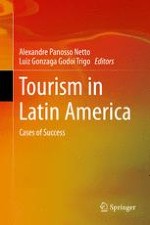2015 | OriginalPaper | Chapter
12. Success in Progress? Tourism as a Tool for Inclusive Development in Peru’s Colca Valley
Authors : María-Luisa Rendón, Simon Bidwell
Published in: Tourism in Latin America
Publisher: Springer International Publishing
Activate our intelligent search to find suitable subject content or patents.
Select sections of text to find matching patents with Artificial Intelligence. powered by
Select sections of text to find additional relevant content using AI-assisted search. powered by
